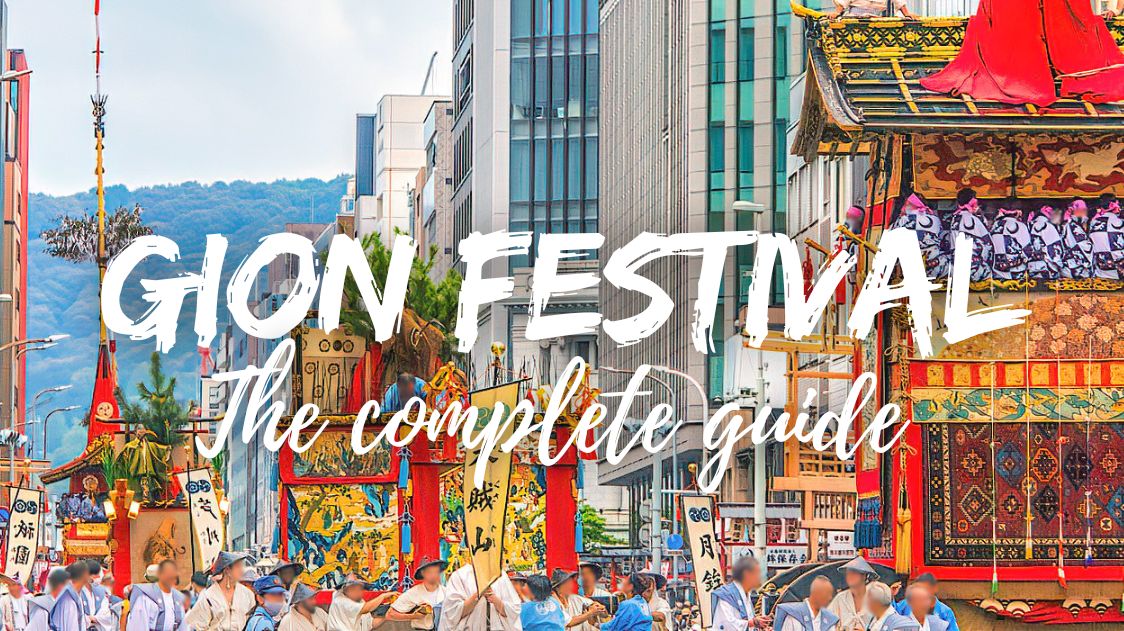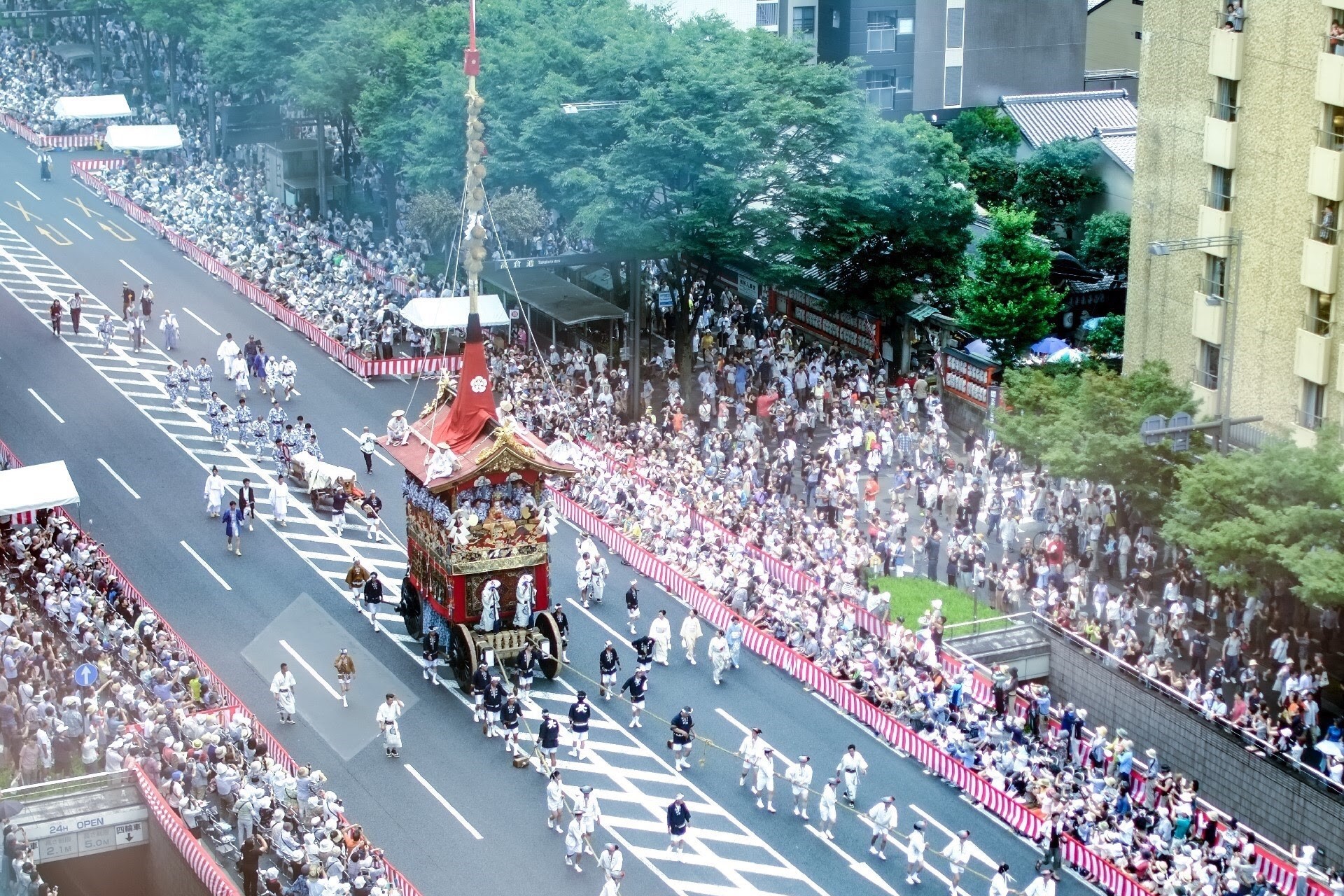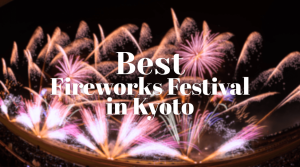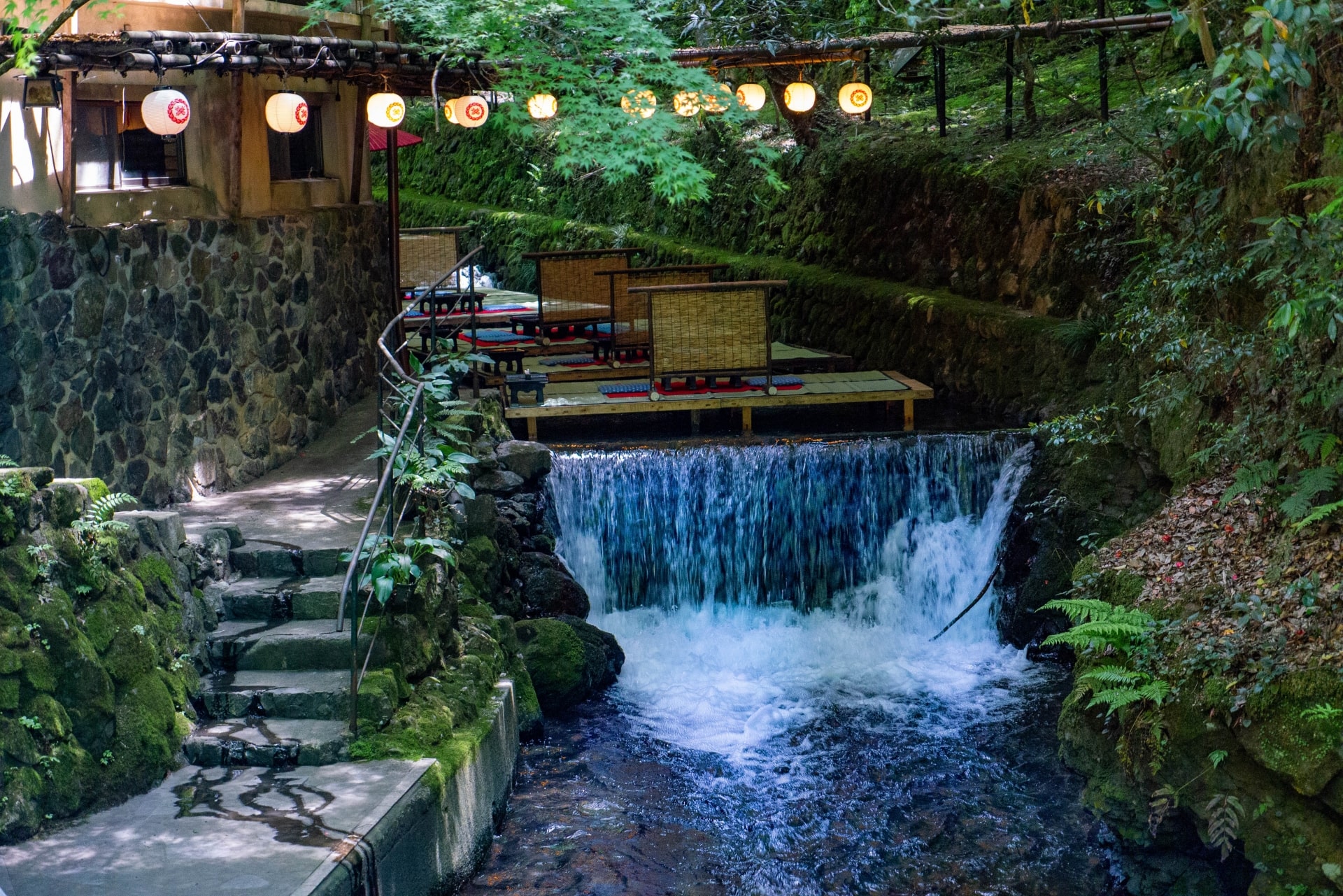Gion Festival: The Complete Guide
Guide to Kyoto's Gion Festival (Gion Matsuri)

The Gion Festival is one of the most spectacular events held annually in Kyoto throughout July. Originating over a thousand years ago as a religious ritual to appease the gods during an epidemic, it has evolved into one of Japan’s most internationally famous and elaborate festivals.
Featuring magnificent float processions, traditional music, and community participation, it draws huge crowds of visitors, both locals and from abroad, into its lively celebration. All of them eager to see highlights such as the grand parades of floats, known as Yamaboko Junkō, on July 17 and July 24. So if you’re planning to visit Kyoto around these dates, keep reading for all the details!
What is the Gion Festival?

Traditionally centered around the Yasaka Shrine, the festival has grown to encompass a whole month of various events, peaking with the spectacular parade of floats known as “Yamaboko Junko”. These floats, classified into two types—Yama and Hoko—are towering wooden constructions adorned with the most exquisite craftsmanship. The floats are constructed without the use of nails and are pulled through the streets of Kyoto by teams of men in traditional attire, demonstrating feats of engineering and artistry from ancient Japan.

The Gion Festival is deeply intertwined with the local community. Leading up to the main parades, Kyoto’s downtown area is transformed into a lively festival ground, where local families display valuable family heirlooms and traditional artworks in their homes. The evenings before the parade see the streets filled with stalls selling traditional foods and goods, while locals and visitors alike don traditional yukata robes to enjoy the festive atmosphere.
When is the Gion Festival Held?
The Gion Festival takes place throughout July. The major highlights are the grand float processions on July 17 (Saki Matsuri) and July 24 (Ato Matsuri), preceded by festive evenings (Yoiyama).
Where is the Gion Festival Held?

Getting to Gion Festival
Yasaka Shrine is located 9-min on foot from Gion-Shijo Station on the Keihan Main Line or 12-min on foot from Kyoto-Kawaramachi Station on the Hankyu-Kyoto Line. The parade areas and the festival’s main activities are focused around Shijo, Kawaramachi, and Oike streets in Kyoto, which can be easily reachable from Karasuma Station on the Hankyu-Kyoto Line, Karasuma Oike STation on the Karasuma and Tozai lines or Kyoto Shiyakusho-mae Station on the Tozai Line.
What to see at the Gion Festival
The Gion Festival is a spectacle of culture, tradition, and community spirit, offering a plethora of sights that attract millions of visitors. Here’s an expanded list of things to see during the festival:
- Yamaboko Junkō (山鉾巡行): The highlight of the festival, these grand parades feature large, elaborately decorated floats known as Yamaboko. Each float is a masterpiece of traditional Kyoto craftsmanship, adorned with intricate tapestries and carvings.
- Yoiyama (宵山): On the three nights leading up to the parade, the streets of Kyoto come alive with lights, music, and crowds. Each evening is called yoiyoiyoiyama (宵々々山), yoiyoiyama (宵々山) and yoiyama (宵山), respectively. The floats are displayed in the streets, beautifully lit up, allowing up-close views and interaction.
- Byobu Matsuri (屏風祭り): During Yoiyama evenings, local families open their homes to the public for a “folding screen festival”, displaying valuable family heirlooms and folding screens. This provides a unique glimpse into the private and historical artworks of Kyoto.
- Mikoshi Procession: Besides the float processions, there are also mikoshi (portable shrine) processions, where locals carry shrines through the streets, believed to help purify the path and bring good fortune to the community.
- Shinkō-sai Ceremony: This important religious event involves transferring the deity from Yasaka Shrine to a temporary shrine at the Otabisho during the festival, symbolizing the deity’s participation in the festivity.
- Ayagasaboko: This is a special children’s float parade, showcasing smaller, but no less intricate floats handled entirely by children, promoting the festival’s traditions to the next generation.
- Street Food and Market Stalls: As with every festival in Japan, the culinary aspect is one of the highlights of the event. Streets are lined with stalls selling traditional Japanese street food like yakitori, takoyaki, and yaki soba, alongside stalls offering games and traditional goods.
- Cultural Performances: Throughout the festival, various cultural performances including traditional Japanese dance, music, and theater are showcased, providing a full experience of Kyoto’s artistic heritage.
- Fireworks Display: Although not a traditional part of the festival, in recent years, fireworks displays have been added on certain nights, illuminating the Kyoto skyline against the backdrop of the city’s historical architecture.
Tourist attractions near the Gion Festival
1. Gion District

More info: Gion: Traditional Geisha District in Kyoto
2. Kiyomizudera Temple

More info: Kyoto Kiyomizudera Temple: When is the Best Time to Visit?
<<Make the most of your visit with a Kimono Rental in Kiyomizudera!>>>
3. Ninenzaka

More info: Ninenzaka and Sannenzaka: Unspoiled Historical Alleys in Kyoto
4. Nishiki Market

More info: Nishiki Market Tour: Food and Shopping Guide
The Gion Festival not only showcases Kyoto’s cultural traditions but also serves as a portal to the city’s rich historical landscape. Surrounding attractions complement the festival’s lively atmosphere, and experiencing this festive season in Kyoto is sure to become the highlight of your experience in Japan if you’re lucky enough to be here around these dates!
▽Subscribe to our free news magazine!▽
For more information about seasonal attractions and travel in Japan, check these articles below, too!
▽Related Articles▽
Written by
Photographer, journalist, and avid urban cyclist, making sense of Japan since 2017. I was born in Caracas and lived for 14 years in Barcelona before moving to Tokyo. Currently working towards my goal of visiting every prefecture in Japan, I hope to share with readers the everlasting joy of discovery and the neverending urge to keep exploring.













